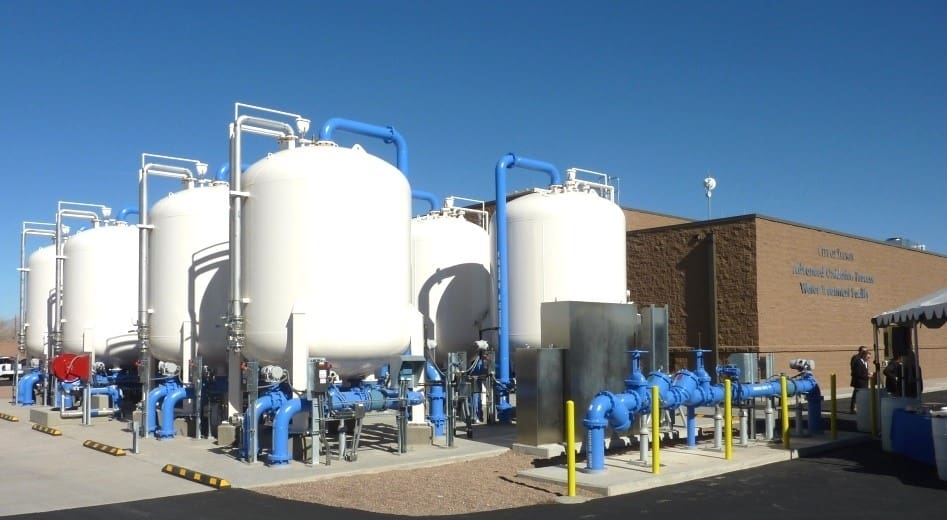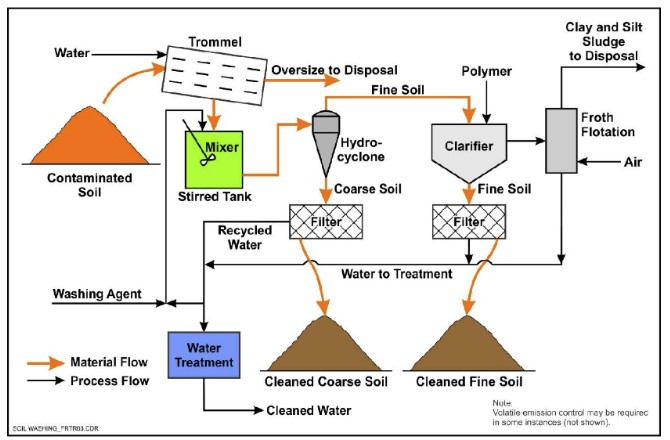How PFAS Treatment Reduces Environmental Impact and Improves Public Safety
How PFAS Treatment Reduces Environmental Impact and Improves Public Safety
Blog Article
Innovative PFAS Treatment Solutions for Safer Water
The boosting occurrence of PFAS contamination in water supplies necessitates a vital evaluation of cutting-edge therapy remedies. Advanced filtering technologies and novel chemical therapies existing promising opportunities for minimizing these consistent contaminants. Furthermore, arising bioremediation strategies offer an even more lasting approach to taking on PFAS obstacles. As regulatory structures proceed to adjust, understanding the efficiency and scalability of these remedies becomes critical. What effects do these innovations hold for public health and ecological repair, and exactly how can stakeholders properly apply them in varied contexts?
Introduction of PFAS Contamination
PFAS contamination has actually arised as a considerable ecological and public wellness problem. Per- and polyfluoroalkyl compounds (PFAS) are a group of artificial chemicals known for their persistence in the atmosphere and human body, leading them to be commonly referred to as "permanently chemicals." These substances have actually been extensively utilized in numerous industries, consisting of firefighting foams, water-repellent materials, and food product packaging, mostly due to their water- and grease-resistant residential or commercial properties.
The extensive use PFAS has caused their detection in soil, water supplies, and also in the blood of human beings and pets. Research studies have linked PFAS exposure to numerous wellness concerns, including developing results in infants, immune system dysfunction, and different types of cancer. In addition, the ecological perseverance of these compounds complicates their deterioration and elimination, raising concerns regarding long-term environmental effects.
Regulative bodies are increasingly implementing stringent standards to keep an eye on and reduce PFAS levels in drinking water and other ecological mediums. As understanding of PFAS contamination grows, it has become imperative for communities and industries to look for reliable treatment services to reduce direct exposure and protect public health and wellness.
Advanced Purification Technologies
As the necessity to attend to PFAS contamination escalates, advanced filtration technologies have arised as a critical part in the removal efforts focused on getting rid of these consistent chemicals from water sources. These innovations leverage advanced devices to effectively target and catch PFAS substances, which are notoriously resistant to traditional treatment techniques.
Among one of the most encouraging approaches is making use of granular activated carbon (GAC), which adsorbs PFAS particles due to its high surface and porous framework. This method has actually been extensively executed in both metropolitan and industrial settings, showing substantial reductions in PFAS focus. Furthermore, ion exchange resins have actually gotten traction, specifically developed to precisely bind PFAS ions from water, therefore facilitating their removal.
Membrane filtering modern technologies, such as reverse osmosis and nanofiltration, additionally reveal efficiency in PFAS elimination by physically separating pollutants from water - pfas management. These systems can achieve high degrees of purity, making them appropriate for alcohol consumption water applications
Chemical Treatment Developments
Many chemical treatment innovations are being checked out to successfully address PFAS contamination in water products. One appealing strategy includes using advanced oxidation procedures (AOPs), which utilize powerful oxidants such as ozone, hydrogen peroxide, or read chlorine dioxide integrated with UV light to damage down PFAS substances right into much less damaging substances. This technique has actually demonstrated effectiveness in laboratory settings, showing prospective for scalability in real-world applications.
Another cutting-edge strategy is the development of ion-exchange materials especially designed to target PFAS. These materials can selectively adsorb PFAS compounds from water, allowing for their elimination throughout therapy processes. Recent improvements have actually improved the efficiency and capacity of these materials, making them a favorable option for water treatment facilities.
Furthermore, scientists are checking out making use of chemical agents like persulfate and ferrous ions to enhance the destruction of PFAS in polluted water. These agents can cause chemical reactions that assist in the failure of persistent PFAS compounds.
Arising Bioremediation Techniques
Current improvements in chemical treatment innovations have actually paved the means for exploring bioremediation techniques as a practical option for resolving PFAS contamination. Bioremediation harnesses the all-natural metabolic procedures of microbes to weaken or change contaminants, making it an enticing strategy for tackling consistent contaminants like PFAS.
Arising methods in bioremediation include the use of genetically engineered microbes that can especially target and break down PFAS substances. These microbial stress are being developed for their enhanced deterioration capabilities, boosting the efficiency of the remediation procedure. Additionally, scientists are exploring the potential of plant-assisted bioremediation, where specific plant species might uptake and sequester PFAS from polluted dirt and water.
One more promising method is the application of bioaugmentation, which involves introducing valuable microbes into polluted settings to improve the degradation of PFAS. This technique can assist in quicker remediation timelines and enhance overall effectiveness.

Regulatory Structures and Standards
A thorough regulatory structure is necessary for efficiently taking care of PFAS contamination and ensuring public wellness security. The enhancing acknowledgment of per- and polyfluoroalkyl substances (PFAS) as toxic wastes has triggered numerous government and state companies to establish criteria that govern their visibility in water supplies. The United State Epa (EPA) has developed health and wellness advisories and is check my source pursuing establishing enforceable limitations for PFAS in drinking water.
State-level guidelines vary dramatically, with some states embracing stricter standards than those suggested by the EPA. These policies frequently consist of maximum contaminant degrees (MCLs) for specific PFAS compounds, tracking demands, and reporting commitments for water utilities. Additionally, arising frameworks concentrate on the removal of contaminated websites, highlighting the demand for efficient therapy technologies.

Final Thought
Finally, the growth and implementation of ingenious PFAS treatment services are crucial for addressing the pervasive problem of water contamination. Advanced filtering technologies, chemical treatments, and arising bioremediation methods collectively present a complex approach to efficiently minimize and weaken PFAS levels. As regulative structures continue to advance, incorporating these technologies will be necessary to safeguard public health and recover the honesty of polluted water sources, inevitably contributing to a cleaner and safer environment.
Report this page